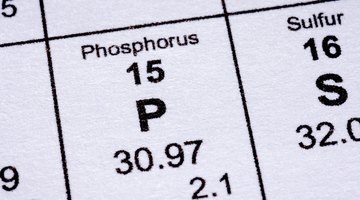How to Acidize the Points of a Water Well
When water wells cease to function properly, it may be necessary to acidize. The addition of acids into a well will stimulate productivity by breaking down and removing mineral deposits that may be impeding the well's proper operation.

Things You Will Need
- Safety goggles
- Gloves appropriate for resisting chemical spills
- Protective clothing
- Pump
- Site-appropriate acid
- Clean water (in case of accidental splash in the eyes)
A variety of acids may be used to correct the process, depending on the materials used to construct the well. The acid is pumped into the well's bore under pressure to effect a chemical reaction with the rock to enlarge the existing points, or to create new chambers within the well.
Preparations
-
Determine the materials used to construct your well. This includes the casing and the screen. This will dictate what type of acid should be used.
-
Determine the type of buildup that is preventing proper well operation. This may involve contacting well professionals in your area as well problems tend to stem from many of the same causes in areas with the same soil types and water source.
-
Select an acid appropriate for your well. This could be hydrochloric acid, sulfamic acid, glycolic acid or phosphoric acid. Each type will correct a specific problem and each has unique caustic properties. Know what acid you need before obtaining any.



Acidizing the Well
-
Gather all personal protective equipment and clean water. Wear equipment at all times when handling acid.
-
Pump acid into the well. If using a concentrate, prepare solution first by adding the acid to the water. Allow adequate time for acid to dissolve minerals and blockages.
-
Remove water from well in cases of extreme blockage by pumping out acidified water. Reapply acid and remove again as needed.


Warning
Acids are extremely harmful if used improperly, and can even cause death. If there is any uncertainty about your ability to handle them, call a professional. Always wear protective clothing and always remember if mixing acid and water to always add acid to water, not vice-versa.
References
Writer Bio
Chris Bond has been writing about gardening, sustainable agriculture and local history since 2005. He has been published in "The Plain Dealer," "The Repository" and online. Bond holds an A.A.S. from the State University of New York at the Finger Lakes campus in Canandaigua, N.Y.
Photo Credits
- PhotoObjects.net/PhotoObjects.net/Getty Images
- PhotoObjects.net/PhotoObjects.net/Getty Images
- George Marks/Retrofile/Getty Images
- Jupiterimages/Photos.com/Getty Images
- Jupiterimages/Photos.com/Getty Images
- Zedcor Wholly Owned/PhotoObjects.net/Getty Images
- Hemera Technologies/PhotoObjects.net/Getty Images
More Articles



